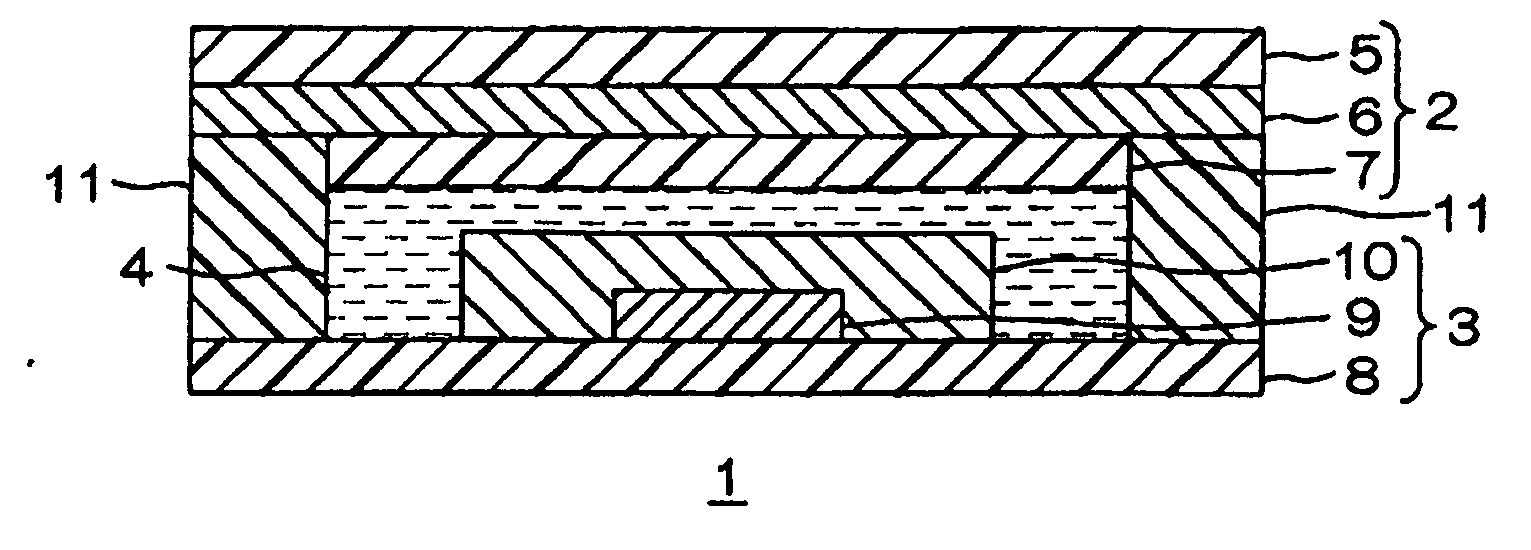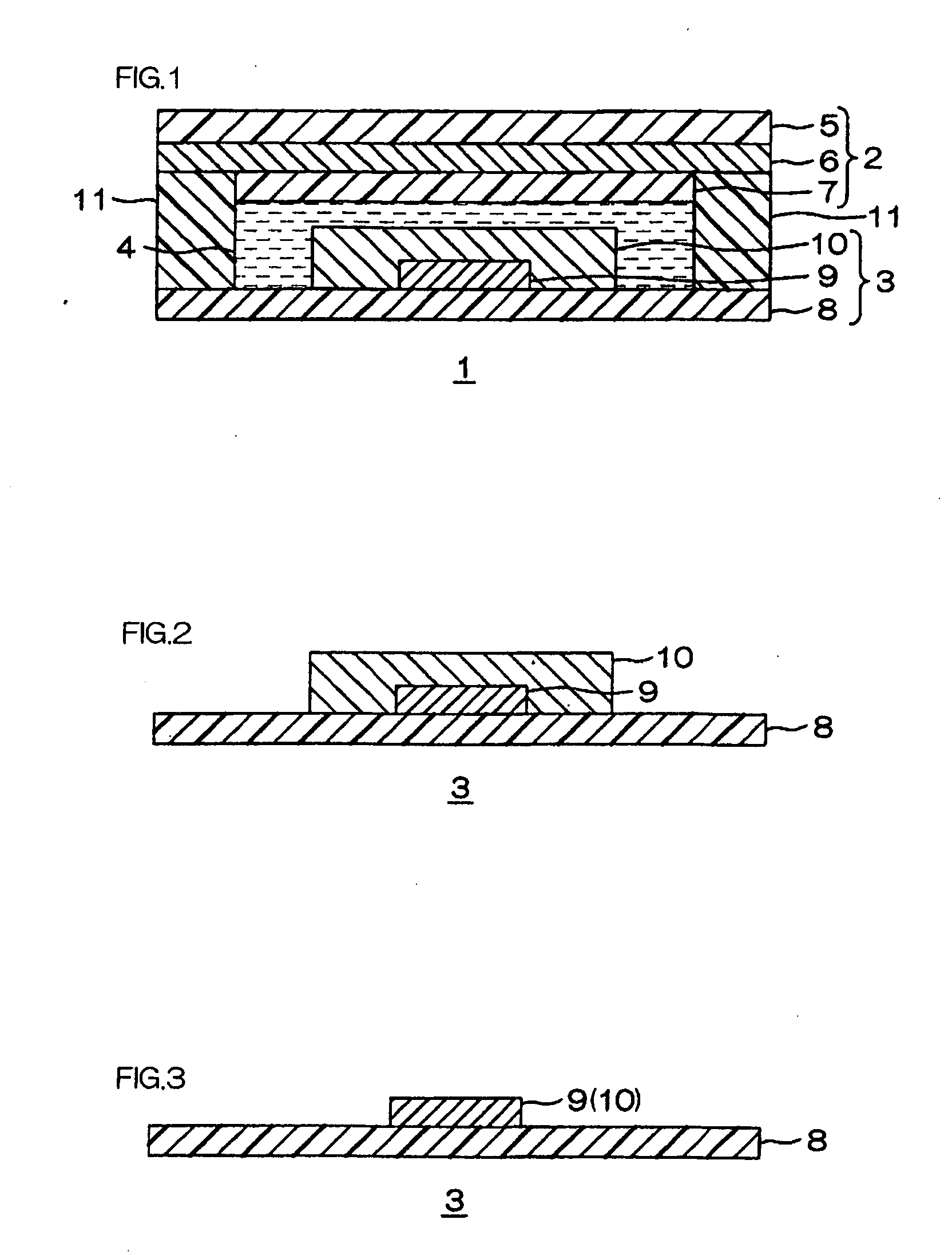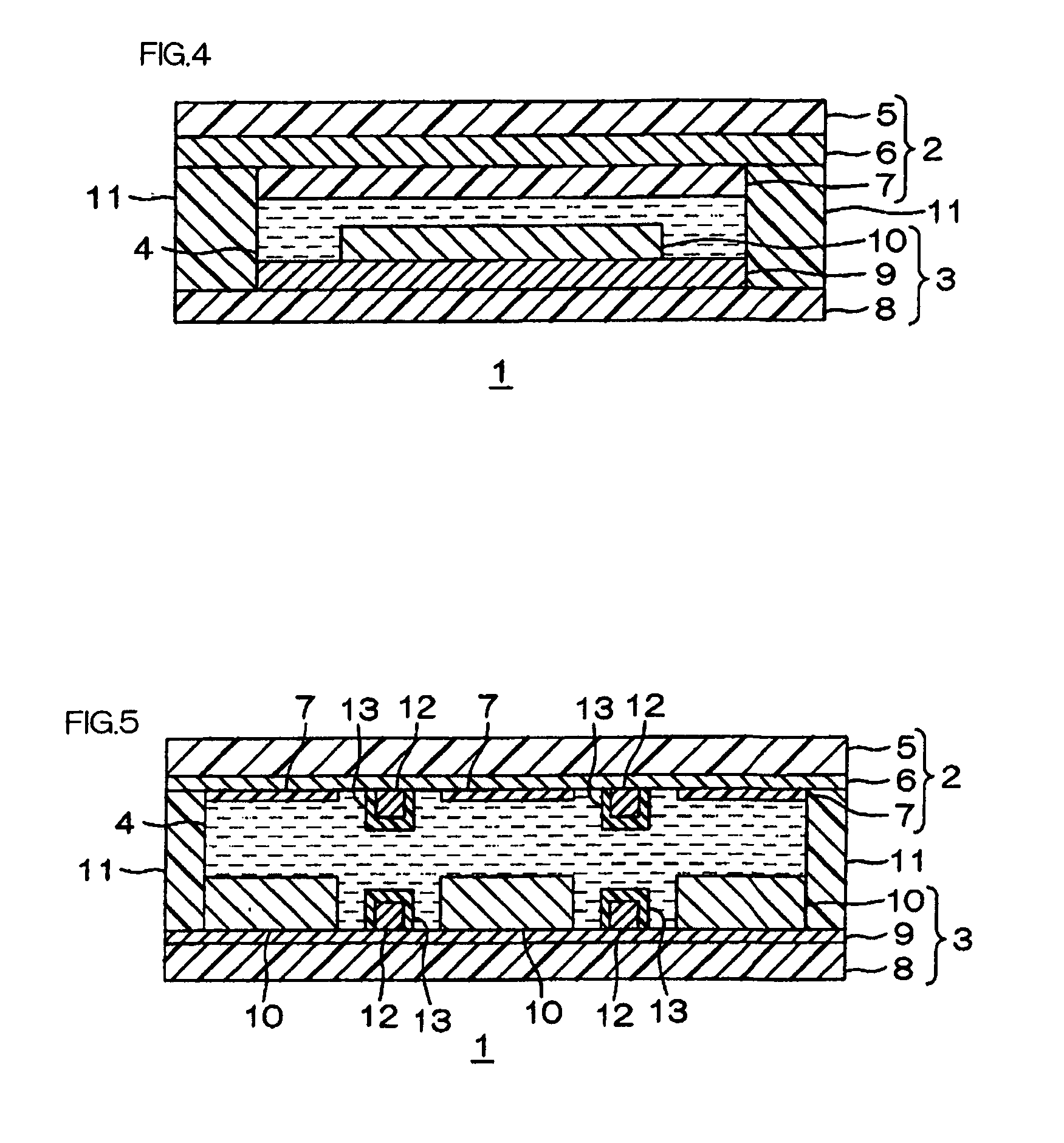Dye-sensitized solar cell electrode and dye-sensitized solar cell
- Summary
- Abstract
- Description
- Claims
- Application Information
AI Technical Summary
Benefits of technology
Problems solved by technology
Method used
Image
Examples
example 1
[0156]A monomer solution was prepared by dissolving 3,3′,4,4′-biphenyl tetracarboxylic acid dianhydride and paraphenylenediamine in N,N-dimethylacetamide at an equal molar ratio so as to achieve a polyamic acid concentration of 20 wt %. Then, a solution of polyamic acid (varnish) was prepared by allowing the monomer solution to react at ambient temperature for 24 hours.
[0157]Afterwards, the prepared varnish was applied on a base material made of stainless steel, and then dried at 105° C., thereby forming a film.
[0158]Afterwards, the film was heated and cured at 375° C. A polyimide film (thickness 25 μm) was obtained in this manner. The polyimide film had a water absorption (ASTM D570) of, when immersed in water having a temperature of 23° C. for 24 hours, 1.4 wt %.
[0159]The obtained polyimide film served as a cathode-side substrate.
[0160]Then, the upper face of the cathode-side substrate was subjected to a nitriding treatment by a nitrogen plasma treatment. Conditions of the nitroge...
example 2
[0171]A counter electrode (dye-sensitized solar cell electrode) was made in the same manner as in Example 1, except that a polyimide film (Upilex® S, thickness 25 μm, manufactured by Kaneka Corporation) was used in the preparation of the cathode-side substrate instead of the above-described polyimide film (thickness 25 μm).
[0172]This polyimide film (Upilex® S) was obtained by reaction of 3,3′,4,4′-biphenyl tetracarboxylic acid dianhydride with paraphenylenediamine.
[0173]This polyimide film (Upilex® S) had a water absorption (ASTM D570) of, when immersed in water having a temperature of 23° C. for 24 hours, 1.4 wt %.
PUM
 Login to View More
Login to View More Abstract
Description
Claims
Application Information
 Login to View More
Login to View More - Generate Ideas
- Intellectual Property
- Life Sciences
- Materials
- Tech Scout
- Unparalleled Data Quality
- Higher Quality Content
- 60% Fewer Hallucinations
Browse by: Latest US Patents, China's latest patents, Technical Efficacy Thesaurus, Application Domain, Technology Topic, Popular Technical Reports.
© 2025 PatSnap. All rights reserved.Legal|Privacy policy|Modern Slavery Act Transparency Statement|Sitemap|About US| Contact US: help@patsnap.com



